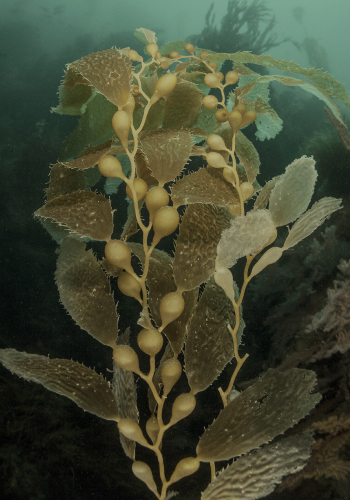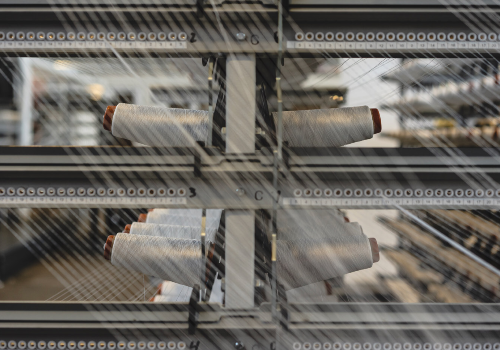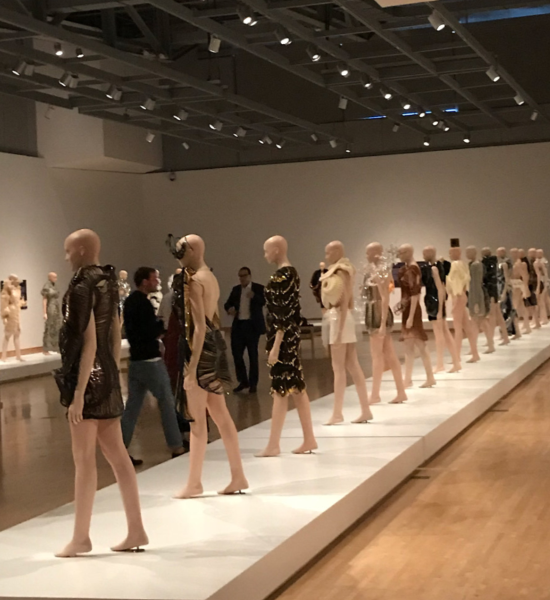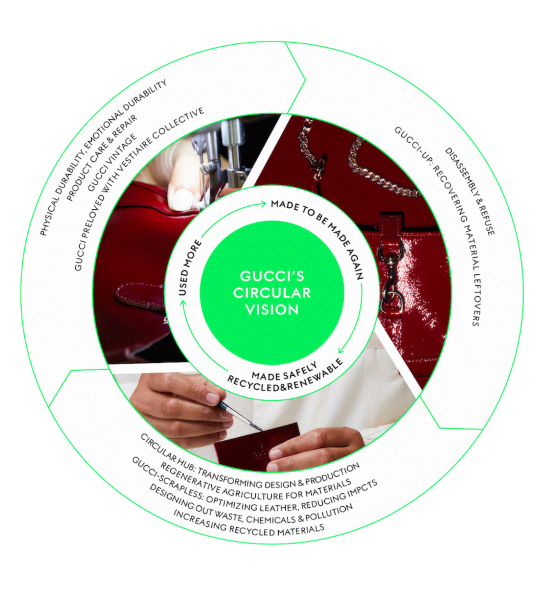BY ANGELA FAIRHURST
In recent years, the fashion industry has faced increasing scrutiny for its environmental impact. As consumers become more conscious of their ecological footprint, designers and brands are responding with innovative solutions to create more sustainable clothing — and these cutting-edge trends are reshaping the fashion landscape.
ECONYL REGENERATED NYLON: TURNING WASTE INTO WEARABLE ART
ECONYL nylon addresses the problem of existing waste by transforming it into a valuable resource. Developed by Italian firm Aquafil, ECONYL is a regenerated nylon made from recycled waste materials such as fishing nets, carpet fibers, and industrial plastic. This innovative approach not only helps to reduce the amount of waste in landfills and oceans but also provides a sustainable alternative to virgin nylon, which is derived from petroleum.
The process of creating ECONYL is a testament to circular economy principles. The nylon waste is collected, cleaned, and chemically recycled to its basic chemical structure. It’s then reformulated into a new nylon yarn that’s identical to virgin nylon. Remarkably, this process can be repeated infinitely without loss of quality, making ECONYL a truly innovative material. Several high-profile brands have recognized the potential of ECONYL and incorporated it into their collections.
Gucci: The Off The Grid collection focuses on circular production, incorporating ECONYL to create stylish, eco-friendly products. Gucci’s commitment to sustainability extends beyond just materials: the brand is also investing in initiatives that support environmental conservation and social responsibility.
Napapijri: The Circular Series for Napapijri introduced the first of its kind — a reimagined premium jacket line that is 100% recyclable thanks to its mono-material composition. The fillings and trims are made of ECONYL, making it easy to recycle and regenerate at the end of its useful lifetime. Napapijri launched the collection with a take-back program to encourage consumers to return the jackets for recycling
Prada: The Re-Nylon collection features bags and accessories made from ECONYL, demonstrating how recycled materials can be used to create luxury products, challenging the notion that sustainability and high fashion are mutually exclusive. This collection not only emphasizes style but also promotes environmental responsibility, appealing to a growing demographic of eco-conscious consumers.The adoption of ECONYL by these prestigious brands is helping to normalize the use of recycled materials in fashion, paving the way for wider industry acceptance and consumer demand for sustainable options.
SEAWEED-BASED MATERIALS: OCEAN- FRIENDLY FASHION
One of the most exciting developments in sustainable fashion is the use of seaweed- based materials. This innovative approach not only provides an eco-friendly alternative to traditional fabrics but also helps address the issue of marine pollution. Seaweed, a fast- growing and abundant resource, offers several advantages as a raw material for textiles.
Seaweed requires no fresh water, land, or fertilizers to grow, making it one of the most sustainable crop options available. As it grows, seaweed absorbs carbon dioxide, helping to mitigate climate change through carbon sequestration.

Fabrics made from seaweed are fully biodegradable, which reduces long-term environmental impact. Additionally, seaweed-based fabrics often inherit beneficial natural properties, such as UV protection and antimicrobial qualities.
Materials science company smartfiber AG developed SeaCell, a patented, eco-friendly fiber that combines seaweed with other sustainable materials like eucalyptus. This innovative fiber has limitless applications in textiles, making it suitable for a wide range of uses, from sports and leisure apparel to soft furnishings.
SeaCell fibers are soft, breathable, and rich in nutrients that can benefit the skin. They are also 100% biodegradable, allowing the skin to harness the power of nature through
fibers that are abundant in minerals, antioxidants, and vitamins. Several brands and designers are at the forefront of this trend.
Pangaia: This materials science company has developed C-Fiber, a fabric innovation that combines wood pulp and seaweed powder from SeaCell. The resulting fabric is water-saving and biobased, offering a sustainable alternative to traditional textiles. Pangaia’s Lightweight Rib collection, made with C-Fiber, showcases the potential of this material to create soft, breathable, and environmentally friendly garments.
Scarlett Yang: A Central Saint Martins graduate and winner of LVMH’s Maison/0 Green Trail Award, Yang combines algae with other ocean-based materials to create her 3D-printed bio-based fabrications. Her designs highlight the versatility and sustainability of seaweed, showcasing how innovative materials can redefine fashion aesthetics.
Tabinotabi: This brand uses SeaCell fiber, incorporating brown seaweeds harvested in Iceland, to produce eco-friendly fabrics for fashion design. Tabinotabi emphasizes the importance of local sourcing and sustainable practices in its production methods, contributing to the preservation of marine ecosystems.
The rise of seaweed-based materials in fashion represents a broader shift towards bio-based, renewable resources in the industry, demonstrating that looking to nature for solutions can lead to innovative, sustainable practices that benefit both the environment and consumers.
ECO YARNS: SUSTAINABLE AND STYLISH KNITWEAR
Eco yarns are typically made from organic, recycled, or natural fibers, which require less energy and fewer resources to produce compared to conventional yarns.

This approach helps to lower carbon footprints, conserve water, and reduce waste. Additionally, eco yarns often involve ethical production practices, ensuring fair labor conditions.
Kerisma Knit: Kerisma Knit is leading the way in promoting sustainability through the use of eco yarns, aiming to create stylish, high-quality garments that align with environmentally conscious values and cater to the growing demand for sustainable fashion.

Kerisma Knit uses eco yarns that are blends of recycled polyester, wood pulp, and sometimes, elastane. Their eco yarns often contain a significant proportion of recycled polyester, making up about 92% of the composition in some styles, with 5% wool and 3% elastane added for texture and elasticity. For example, the Nash Long Cardi is crafted from 92% recycled polyester, 5% wool, and 3% elastane. Similarly, other products in the eco-yarn collection follow this sustainable approach, blending recycled and natural fibers to create high-quality, environmentally friendly knitwear. By using eco yarns, Kerisma Knit highlights the importance of using recycled and natural materials to create fashionable, durable, and eco-friendly garments.
3D PRINTING FOR FASHION: INNOVATIVE AND SUSTAINABLE
3D printing technology is revolutionizing the fashion industry, offering new possibilities for sustainable garment production. This method allows for reduced waste, on-demand manufacturing, and the use of biodegradable or recycled materials. Unlike traditional manufacturing methods, which often involve significant waste and resource consumption, 3D printing enables designers to create items with precision and efficiency.


In the realm of 3D printing for fashion, two key approaches have emerged. Firstly, 3D bioprinting, which draws inspiration from medical applications, focuses on using biodegradable materials to create fashion items. This technique allows for the production of complex shapes and structures that would be difficult or impossible to achieve with conventional methods. The second, Zero-waste 3D printing, combines additive manufacturing technology with design principles that aim to eliminate production waste, particularly in the creation of accessories and small fashion items. Both methods offer innovative solutions for more sustainable fashion production. Several brands and designers are leveraging 3D printing for sustainable fashion.
Iris van Herpen: Couturier and artist Iris van Herpen was the first designer to use three-dimensional printing to create a complete runway-ready dress in 2011, which was highlighted in Time magazine’s “50 Best Inventions” feature. van Herpen has been pushing the boundaries of the technology ever since — creating printed pieces and hand-stitching them together to create intensely beautiful sculptural garments. In 2018, the Phoenix Art Museum showcased van Herpen’s work through its “Iris van Herpen: Transforming Fashion” exhibit, which featured a beautiful ensemble of 40 futuristic designs.
Ministry of Supply: This brand uses recycled materials in their 3D printing process, transforming 1.2 million water bottles into 3D filaments for clothing production, thus addressing both plastic waste and textile production issues.
unspun: A California startup focusing on 3D-weaving technology to create custom-fit jeans with minimal waste, unspun demonstrates how zero-waste principles can be applied to various aspects of clothing manufacturing.
THE BROADER CONTEXT OF SUSTAINABLE FASHION
These four trends are part of a larger movement towards sustainability in the fashion industry and are just the beginning. Other emerging trends include:
• Advanced fiber recycling technology to separate mixed materials.
• Novel sustainable materials derived from food waste, algae, human hair, and mushrooms.
• Vegan material alternatives such as bio-based leathers.
• Circular economy practices — a closed- loop system focused on reducing waste, maximizing resource efficiency, and extending the lifecycle of products through sustainable design, reuse, recycling, and innovative business models.
• Upcycling — the process of transforming discarded or unused materials and products into new items of higher quality or value.
• Slow fashion and minimalism.
• Ethical and transparent supply chains.
- Eco-friendly dyes, including bacterial and algae-based options.

Now at a critical juncture, the fashion industry’s growing commitment to sustainability illustrates the ability to balance creativity and style with environmental responsibility. As these technologies mature and become more widely adopted, we can expect to see a significant shift in how clothing is designed, produced, and consumed. The future of fashion is one where sustainability is not an afterthought, but rather an integral part of the creative process.






